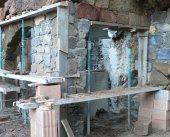
















 1
1




Success has a Thousand Fathers , Failure is an Orphan
LOOK AT THE " SIMILAR THREADS " BELOW !
 1
1




Vlad Alba wrote:I guess I don't understand what you're talking about.
I was just meaning that I want to brick over my little stove. Cover it with bricks. Surround it with bricks, leaving the front door of the stove open and available but covering the top and sides.
I was wondering though if a firebrick would refract the heat rather than just soak it up. Also, I was wondering if firebricks are way expensive.
 2
2




“The most important decision we make is whether we believe we live in a friendly or hostile universe.”― Albert Einstein
 1
1




“The most important decision we make is whether we believe we live in a friendly or hostile universe.”― Albert Einstein




 1
1




“The most important decision we make is whether we believe we live in a friendly or hostile universe.”― Albert Einstein
 5
5








projects blog http://thekulaproject.tumblr.com













Living in Anjou , France,
For the many not for the few
http://www.permies.com/t/80/31583/projects/Permie-Pennies-France#330873























www.alwaysgrowingdesign.weebly.com
"It is, of course, one of the miracles of science that the germs that used to be in our food have been replaced by poisons." - Wendell Berry













 1
1








homestead houligan: one who lives on any homestead and tends to break the "rules" or practices of a traditional homestead. ex:using practices such as permaculture on a homestead. homesteadhouligan.com









![Filename: lee90-1.jpg
Description: [Thumbnail for lee90-1.jpg]](/t/43930/a/38452/lee90-1.jpg)

|
I AM MIGHTY! Especially when I hold this tiny ad:
Freaky Cheap Heat - 2 hour movie - HD streaming
https://permies.com/wiki/238453/Freaky-Cheap-Heat-hour-movie
|








